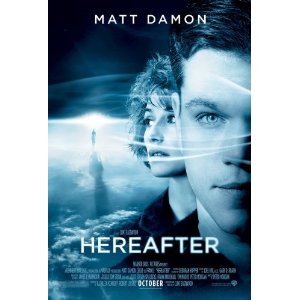During the Halloween season, theaters are always full of horror films created to scare moviegoers with tales of ghosts and death. Clint Eastwood’s “Hereafter” is a different kind of ghost story, asking this simple question: Where do we go when we die?
“Hereafter” is a serious drama, haunting and emotional, which tells the story of three characters learning to deal with loss. It is a visually stunning and finely acted study of grief, and boldly explores the question of the unknown.
Film focuses on three characters in three cities
Through each character, we are able to see how people cope with life’s tragedies, whether it’s losing a job, a loved one, or enduring the loneliness of isolation.
Filmed in locations all over the world, Eastwood focuses on three cities: Paris, London and San Francisco. He uses these places to tell the stories of celebrity journalist Marie LeLay (Cecile De France), struggling student Marcus (George and Frankie McLaren) and reluctant psychic George Lonegan (Matt Damon).
Movie opens with transformative near-death experience
“Hereafter” starts off with a monumentally traumatic event that abruptly changes Marie’s life. While on vacation in a tropical paradise, her world is literally turned upside down when a tsunami destroys her resort. Marie’s near-death experience leaves her a completely altered person. As she returns to France to reestablish her life as a high profile reporter, she begins to realize that her career is in jeopardy and things will never be the same for her.
Marcus is a quiet boy living in London, with his energetic twin brother Jason and his substance-abusing mother. The two boys struggle to fend for themselves while helping their mother avoid getting in trouble with Child Services.
On a fateful trip to the pharmacist, Jason is killed in a car accident, and Marcus is sent to live with foster parents. He then sets out on a journey to find where Jason has gone, and if he can ever speak with him again.
George is a lonely, unassuming factory worker living in San Francisco with a secret past. It turns out that George used to be a world-renowned psychic, specializing in communicating with those who have gone to the great beyond.
Now, George spends all his time driving a forklift, taking cooking classes and trying to avoid his brother Billy (Jay Mohr). Billy sees the money-making potential in George’s ability, and constantly pushes him to do readings for the many bereaved strangers who come knocking at the door.
But all George wants is a normal life, without having to constantly relieve others from their burdens of grief.
Hereafter is a slice of real life
The experiences of Marie, Marcus and George are as compelling as the acting is nuanced — there’s nothing over-the-top about “Hereafter.” It gives us a glimpse into three very basic slices of life.
The pace of the film borders on the slow side, but is rarely boring. The three stories flow well together, not dwelling too long on one over the others. When we find out about George’s obsession with Charles Dickens, it’s easy to re-imagine the film’s title as “A Tale of Three Cities.”
“Hereafter” is definitely interesting to watch, as the story jumps between the three distinct story lines. The editing is flawless, and it’s not hard to feel a connection between the characters in spite of their seeming lack of relevance to one another.
Perhaps it’s the jumping around that builds anticipation to finally see how the characters eventually find one another. It’s this anticipation that leaves a feeling of satisfaction at the end, but it takes a long while to get there. Many will find the ending completely anti-climactic, if not disappointing.
Film leaves mysteries unsolved
If you are looking for any kind of real explanation of the afterlife or the supernatural, “Hereafter” leaves everything to mystery.
It’s amusing, yet sad, to see how Eastwood portrays con-artist mystics through the eyes of Marcus as he goes from one self-proclaimed psychic to the next, in hopes of speaking with his lost brother.
George is portrayed as the only true psychic in the film. He explains that his abilities to speak with the dead are a result of a childhood brain injury. The message of the film does not seem to dwell on those who have passed into the afterlife, but rather to find connections with those who are still living.
“Hereafter” is a worthwhile film for all its stunning visuals, understated performances and well-crafted story lines.
Eastwood asks all the right questions, but does not deliver in the answers department. In spite of expertly weaving a tale from all corners of the world, “Hereafter” ultimately goes nowhere.







